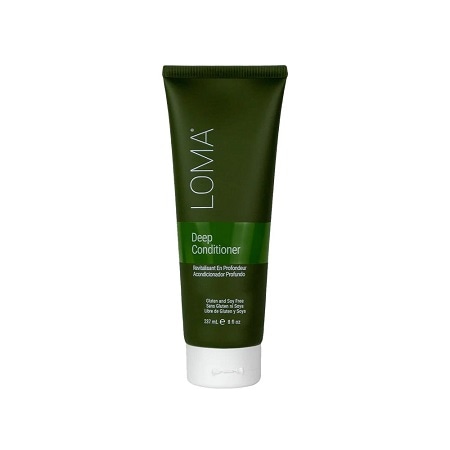Spring Twists: The Ultimate Guide to Gorgeous Natural Hair
In the world of hair styling, there are always new trends popping up now and then. These trends give you the chance to express yourself and change your style. One of the most popular trends right now is “spring twists”. So, what exactly are spring twists, how do you make them, and what are the benefits of spring twists? Keep reading to find out!
What Are Spring Twists?

Spring twists are a protective hairstyle with a springy, coiled look. They're made by twisting strands around a flexible rod, or using the “spring” technique, creating a textured, bouncy look. Not only do spring twists look great, but they’re also a great way to protect your hair from environmental factors and excessive styling.
Why Choose Spring Twists?

Spring twists have gained popularity for several reasons:
Protective Style: The spring twists are a hairstyle that is designed to protect natural hair from environmental factors, such as manipulation and heat styling while allowing the hair beneath to rest and develop, which is suitable for long-term wear.
Low Maintenance: Spring twists require relatively little upkeep in comparison to other protective hairstyles such as braids and weaves. After installation, they can remain in place for a prolonged period of time with minimal effort, making them an ideal option for those with a hectic schedule.
Style Versatility: Spring twists are available in a wide range of lengths, colors, and textures, providing a wide range of styling options. Whether you prefer a long, flowing style, or a short, chic look, you can find a twist that fits your style and personality.
Natural Look: Many people appreciate the natural appearance of spring twists. They mimic the texture of natural African hair, which can make them look less conspicuous and more authentic compared to some other synthetic styles.
How Long Do Spring Twists Typically Last?

The duration of a spring twist, like any other hairstyle, is contingent upon a variety of variables, such as hair type, installation quality, and maintenance. Generally, spring twists are expected to remain in place for a period of between four and eight weeks.
However, the length of time your spring twists will last will depend on the individual. It is also important to keep an eye on the condition of the twists and the natural hair beneath them. If you notice signs of damage or excess frizz, it is recommended to seek professional advice for maintenance or removal.
How To Get the Perfect Spring Twists?
Now that you're intrigued by the allure of spring twists, let's dive into the process of getting them.
Step 1: Consultation
It is important to consult a professional stylist prior to beginning your Spring Twist journey, as they will be able to assist you in determining the appropriate size, length, and style that best suits your facial features and personal preferences.
Step 2: Preparing Your Hair
Spring twists can be applied to both natural hair and hair extensions. During the styling process, your stylist will evaluate the condition of your hair and determine if any pre-washing or conditioning is required.
Step 3: Braiding
The stylist will then divide your hair into neat sections and begin the braiding. Spring twists, on the other hand, are made by braiding your hair or extensions in a coiled pattern. This gives them their signature springy look.
Step 4: Twisting
Once you’ve braided your hair, it’s time for the twisting. With the help of a special braiding technique, your hair will be twisted into those beautiful spiral shapes that define Spring twists.
Step 5: Finishing Touches
To ensure longevity and a polished look, your stylist will carefully secure the ends of your twists and make any necessary adjustments. You can also opt for embellishments like beads or cuffs to enhance the style further.
How To Maintain Spring Twists?
Spring twists are a low-maintenance hairstyle, but you still need to keep them neat and beautiful for as long as possible. Here are some things you can do to keep your spring twists looking their best:
Keep Them Clean
Cleanse your scalp and spring twists on a regular basis to get rid of grime, oils, and product residue. Use a spray bottle to mix shampoo with water and apply gently to your scalp with your fingertips. Massage the scalp with the shampoo and twist the twists through your scalp. Rinse off with slightly warm water.
Deep Conditioning

After shampooing, place a hydrating and moisturizing conditioner on your twists. Allow it to sit for 15-20 minutes so that it penetrates deeply into your hair and keeps it soft. Then rinse thoroughly.
Avoid Excessive Moisture
Keep your twists clean, but don't overuse them. Too much water can make them frizzy and take a long time to dry. Protect your spring twists with a shower cap or a plastic bag while you're in the shower.
Avoid Tight Styles
Spring twists are a great way to protect your hair, but don’t install them too tight as this can lead to scalp tension and hair damage. Talk to your stylist about loosening them if they feel too tight.
Limit Duration
While spring twists are a great way to protect your hair, it’s important that you don't leave them in too long. If you leave them in for longer than 6 to 8 weeks, you run the risk of matting, breaking, and damaging your natural hair. It's best to take a break between installations.
Conclusion
All in all, Spring twists are a great option if you're looking for a protective look that's both fashionable and versatile. Spring twists come in all shapes and sizes, spring twists offer endless possibilities for self-expression. Just follow the tips for proper maintenance and care and you'll be able to enjoy these gorgeous spring twists while keeping your hair healthy.
Related Articles
Passion Twist Hairstyles: Unleashing Your Inner Style
Barrel Twist Locs: A Versatile Style for All Hair Types
Senegalese Twist Guide for Beginners: Everything You Need to Know
